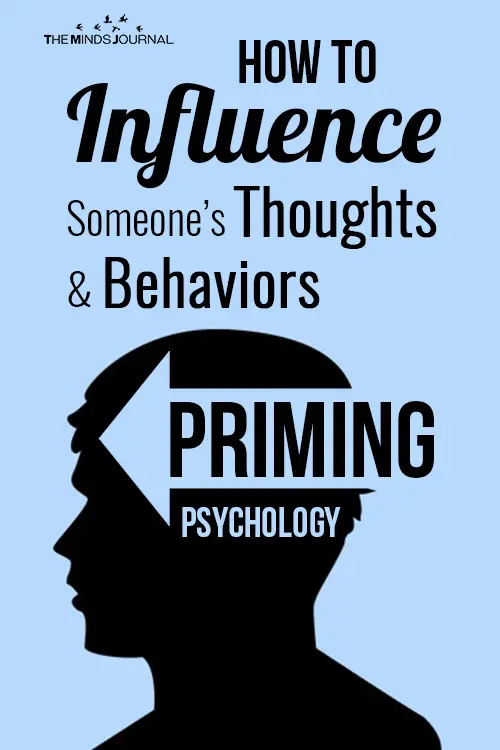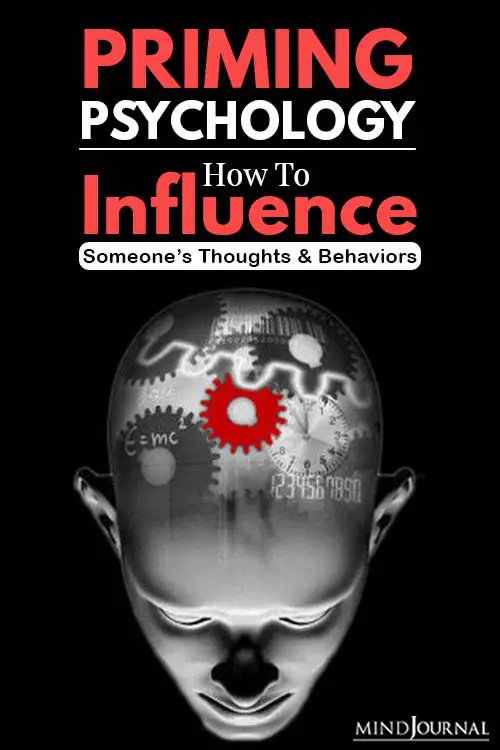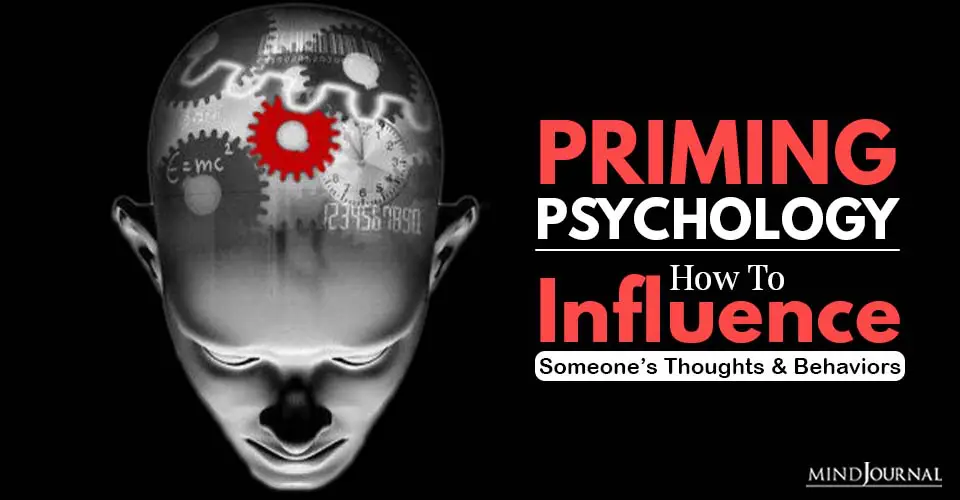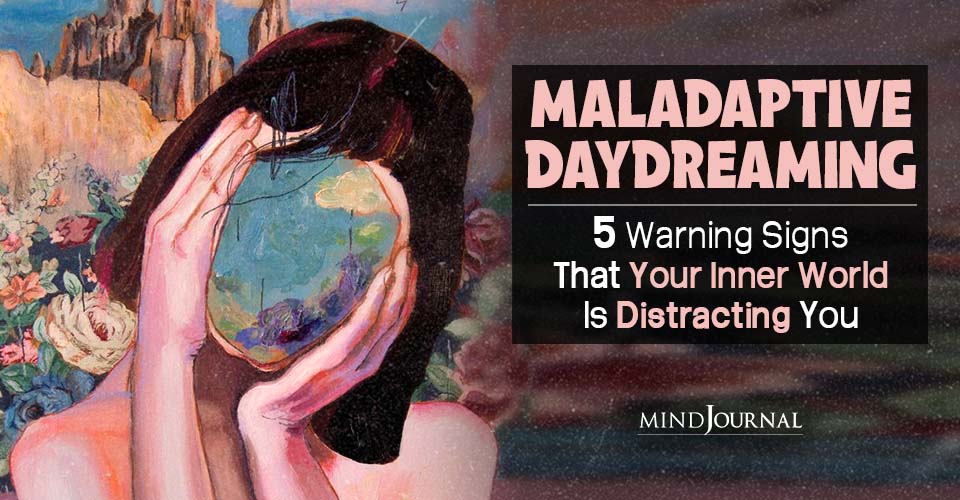Do you want to be your best self? Or do you want to motivate someone to do their best?
Then the power of priming psychology can help you achieve success.
What Is Priming Psychology?
Priming in psychology refers to a technique where exposure to a stimulus influences how you might respond to additional stimulus later.
It is an implicit memory effect utilized to train the human mind and memory in both positive and negative manners. It activates certain associations in our memories before the introduction of another stimulus. Although it may affect various important aspects of our lives, priming can take place without us being consciously aware of it.
According to American Psychological Association (APA), priming psychology is defined as:
“In cognitive psychology, the effect in which recent experience of a stimulus facilitates or inhibits later processing of the same or a similar stimulus. In repetition priming, the presentation of a particular sensory stimulus increases the likelihood that participants will identify the same or a similar stimulus later in the test. In semantic priming, presentation of a word or sign influences the way in which participants interpret a subsequent word or sign.”
Best-selling author & founder at Science of People, Vanessa Van Edwards explains that priming involves the use of a stimulus like words, images or actions that can influence or change a person’s thoughts, perception, and behaviors. She writes “Priming is when we expose someone to something that influences their behavior later on — without that individual being aware that the first thing guided their behavior.”
Also read: What Is Cognitive Dissonance? Common Causes and How To Resolve It
The Psychology Of Priming
Psychologists believe that priming can impact our behavior significantly.
Looking at an image on currency notes can influence our political beliefs and views, or reading words like ‘caution’ or ‘walk slow’ can make us walk slowly.
According to a 2014 study, priming psychology “is mainly used to study memory phenomena or the pre-activation of concepts and motor reactions by related stimuli. In social psychology, the term priming is used for a broader range of phenomena in which an event triggers a subsequent behavior.” However, not everyone will respond equally to priming techniques.
It’s effects largely depend on what an individual is being primed for. It depends on the objective of using priming psychology on the person.
“Priming in psychology has been studied for years because it can have major effects on our behavior and habits, often without us even knowing,” says renowned author, public speaker, and life coach Tony Robbins.
He adds “Priming psychology has shown that our reactions are “primed” by our moods and experiences – for better or worse.”

Also read: What Is Your Dominant Psychological Trait?- Psychology Test
How Does Priming Psychology Work?
According to psychologists, priming is based on the notion that information is usually stored in units or schemas in long-term memory.
Their level of activation can be either escalated or decreased. A schema becomes more accessible as it becomes more activated, which is when it has a higher probability of being a conscious or direct behavior.
Robbins says, “Psychologists theorize that priming occurs because we store information in our long-term memories in groups, or ‘schemas.’ When we see a word or image, the rest of the group to which it belongs is also activated, and the related information is easier to access.”
Research has shown that schemas are generally activated together which leads to the formation of connections among them. This leads to the creation of networks in the human mind. These networks can easily distribute the activation of schemas and when one schema is activated, associated schemas in our network are also activated.

Author and educational consultant Kendra Cherry, MS, explains “When the activation of certain units of information is increased, these memories become easier to access. When activation is decreased, the information becomes less likely to be retrieved from memory.” She adds that priming psychology “suggests that certain schemas tend to be activated in unison. By activating some units of information, related or connected units also become active.”
So how is it useful? How can activation of associated schema be beneficial? “Being able to draw related information into memory more quickly might help people respond faster when the need arises,” says Kendra. Priming is an excellent tool to empower the mind for what it might experience or encounter soon.
“Priming may have evolved to help us make faster decisions by associating danger with certain events. But it doesn’t always help us make the best decisions,” adds Tony Robbins.
Also read: 35+ Mind Bending Facts About Human Behavior
Types Of Priming Psychology
In psychology, there are different types of priming which work in different ways and have specific effects.
Here are the different types of priming in psychology:
1. Positive and negative priming
Positive priming boosts the processing speed and memory retrieval speed. It increases the reaction time from stimulus to response. On the other hand, negative priming makes the process slower.
2. Semantic priming
This type of priming psychology is mainly used when words or objects are associated linguistically or logically. According to author Tony Robbins, it “is a positive type that uses words that are associated logically… Those who are primed semantically can recognize one word more quickly when they hear the other.”
3. Associative priming
This type of priming allows us to increase the speed of processing or response time with the use of an associated word, object or act. It is based on the idea that the brain can respond to stimulus faster when associated terms are used. For instance, “cat” and “dog”.
“This is a more specific type of positive priming and is also known as “context priming.” In priming psychology, it involves the researcher choosing a first word or image that is commonly associated with the second, but not directly related,” says Robbins.
4. Repetition priming
This refers to the repeated pairing of a stimulus & response. As repetition allows us to think quicker, we will respond faster to the same stimulus exposure in a specific way every time it’s processed. Robbins says “It’s achieved when two words are continually paired together. After enough repetition, an individual will be much more likely to respond to the second word when they hear the first.”
5. Perceptual priming
This type of priming involves stimuli with similar forms. It depends on forms with similar format of stimulus and the introduction of the stimulus. According to Robbins, “Rather than two words being conceptually related, this type of priming involves using words that sound similar, such as “hand” and “band.”
6. Conceptual priming
According to priming psychology, this depends on the meaning of the stimulus, the categories and semantic tasks which strengthen the priming. Educational consultant Kendra Cherry writes “Conceptual priming involves a stimulus and response that are conceptually related.” This is used by psychologists to understand how the stimulus is associated with a subject. “Words such as ‘desk’ and ‘chair’ are likely to show priming effects because they are in the same conceptual category,” adds Kendra.
7. Masked Priming
This refers to when the stimulus is hidden or inaccessible, yet our brain somehow manages to identify it unconsciously. Tony Robbins explains that in this type of priming “part of the first word would be obscured.” He adds “When shown the second word, the participant still recognizes it faster. The theory is that even though the stimulus is not fully visible, individuals still react to it.”
Kendra Cherry writes “Even though the entire stimulus is not visible, it still evokes a response. Words in which certain letters are obscured are one example of masked priming.”
Also read: 10 Most Crucial Positive Emotions To Cultivate Daily
How Can You Use Priming Psychology
Priming is widely used by psychologists as therapy to treat patients with stress, anxiety and depression. Positive priming creates positive responses and emotions in patients and can significantly help to manage mood disorders. However, priming is also used in various other aspects of life apart from mental health care.
Here are a few ways priming psychology can help us improve our lives:
1. Psychology & Research
Priming is a helpful tool that enables psychologists and mental health professionals to conduct research on the human brain and memory.
2. Advertising
Priming can also help advertisers and marketing experts to create campaigns to manipulate and convince buyers to spend more money on their products and boost sales.
3. Politics
Similar to advertisements, using the right words, images, colors and other priming strategies like repetition and association can also help politicians to gather your vote.

4. Meditation & yoga
Mantras used during meditation and yoga are also great examples of positive priming which generates positive feelings and relief from stress and anxiety.

5. Addiction
Priming can also be used to alleviate symptoms of addiction. It can replace negative thoughts and emotions with positive ones, motivating the person to bring about necessary positive changes to overcome addictive behavior.
6. Amnesia
Priming psychology is also used as medical-psychiatric treatment for amnesia. Priming strategies like word completion tasks can help patients to successfully complete the task, which they would fail otherwise. Studies have found that long-lasting repetition priming can greatly help patients with amnesia.
7. Education
Priming can also be an excellent tool for education. It can allow students to prepare their minds about the upcoming lessons and offer them an overview about what they are about to learn. According to educational consultant Kendra Cherry, “Teachers and educators can also utilize priming as a learning tool. Some students perform better when they know what they can expect.”
She adds “Priming is often used as an educational intervention for students with certain learning disabilities. New material is presented before it is taught, allowing the student to become comfortable with it… Because they are already familiar with the information and materials, they may be better able to pay attention during the actual lesson.”
Also read: 6 Positive Practices To Boost Happiness and Improve Your Life
Priming To Succeed
You can use priming in your daily life to become a better version of yourself and achieve success in different aspects of life. Although this technique operates outside our conscious awareness, it can certainly be beneficial for us. It can not only influence your perceptions, behaviors, thoughts, emotions and actions, it can also affect how you interpret information.
You can use priming psychology in your daily life through texts, emails, social network updates, powerpoints, journals etc. However, journaling can be exceptionally helpful, believes national best selling author Vanessa Van Edwards. She writes “I find if you journal or self-reflect using words of emotions and actions you want to create, you have a much more successful follow-up.”
She concludes “Priming is an interesting way of approaching your own attitude and other’s. I highly recommend practicing with friends and family members and being transparent about your wanting to produce positive effects in the people you are interacting with.”
Also read: 20 Best Books To Improve Your Life











Leave a Reply
You must be logged in to post a comment.